Each brushstroke imparted with precision, painting the feathers of a blue-winged pitta. “Brilliant,” he muttered as he carefully added dimensions to the pitta’s deep, sky blue wings with fine lines of white.
Under Choo Beng Teong’s brush, the birds come alive.
Choo’s love for birds is evident in his hyperrealistic paintings where each painting showcases such masterful detail that demands the audience to take a closer look.
“People who had never seen my work before always ask if it’s real, because it looks like a photograph. They claim it’s a photograph, not a painting,” Choo said. “They’d never seen such small and detailed work.”
After decades of mastering his skills, Choo, regarded as one of the finest wildlife painters in Malaysia, compiled his favourite bird paintings into his first book, The Art of Choo Beng Teong: Birds of Malaysia in Watercolour. The collection is a love letter to the flighty creatures in Malaysia featuring 124 species of birds from hornbills and kingfishers to raptors and pittas.
Growing up indulging in the natural world, searching for beetles and chasing butterflies, Choo has built a lifelong relationship with the natural world. Birds are his favourite subject to paint, primarily because they are everywhere.
“Birds like owls, eagles, raptors, those are my favourite birds to paint somehow. I don’t quite like the colourful birds like this one,” he said, as he pointed at his canvas of work in progress.
The jacket of Choo’s book shows a common kestrel perched on a tree branch against a plain white backdrop. “I like the open background, so that you can see the bird clearly,” he said.
Turning the pages, it’s not difficult to see the decades of work he has put into the art. He goes through a multistep process. He goes out to observe the birds in their natural habitat, photographs them and then finally brings the photos to life on paper back home.
His proudest work in his book, he said, is the painting of the red junglefowl. To the untrained eye, they look like domestic chickens commonly bred for consumption in Malaysia. “This is a wild junglefowl,” Choo said as he pointed at the painting, particularly proud he encountered the extremely timid bird in the wild.
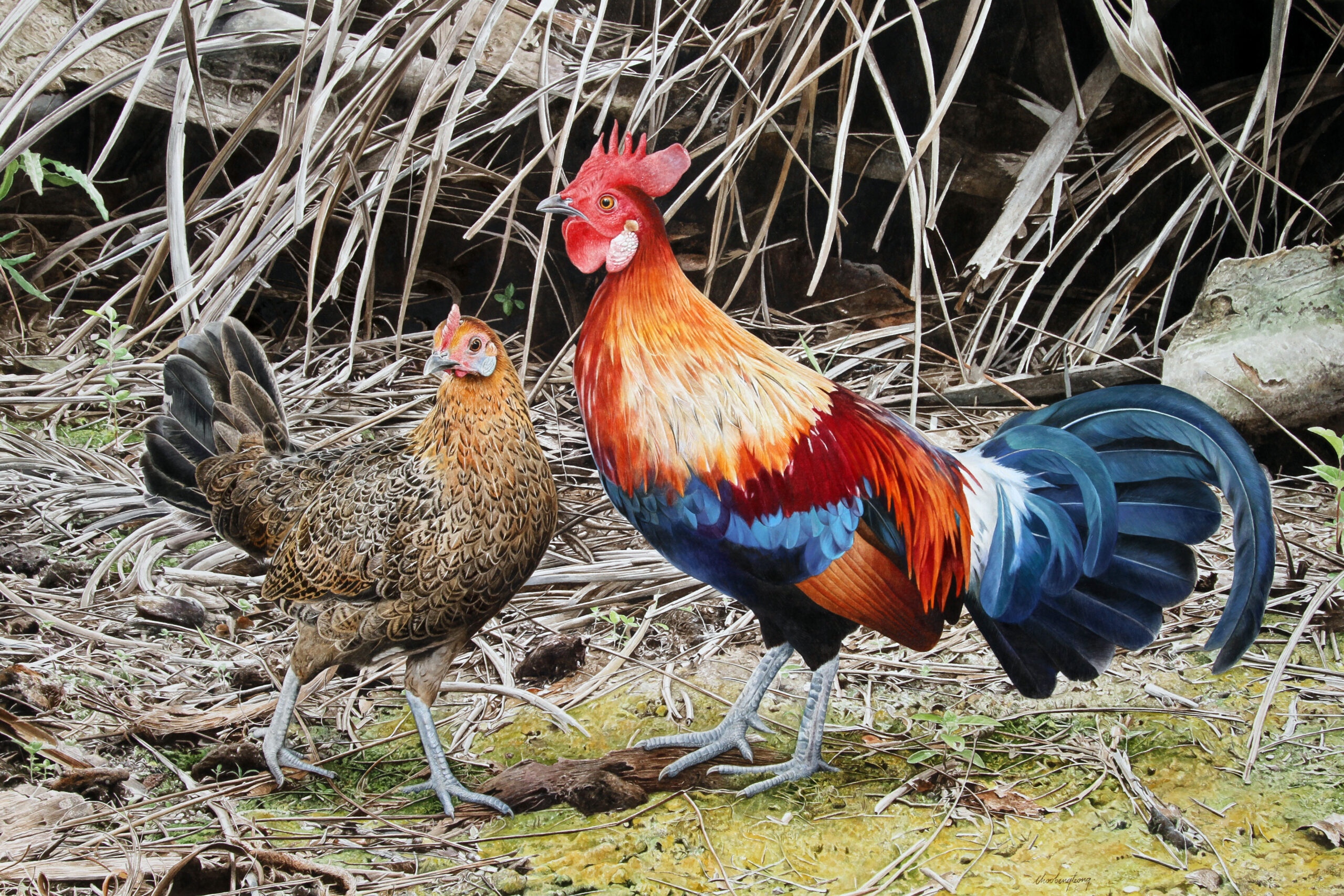
“You have to understand the birds,” he said. “You must understand how their feathers grow, these are all very important details.”
In addition to their anatomy, Choo also must learn the different temperaments and behaviours of the birds.
“If you hear this in the middle of the night,” he said, sounding a rhythmic chirping noise that resembles knocking on wood, “that is a nightjar.”
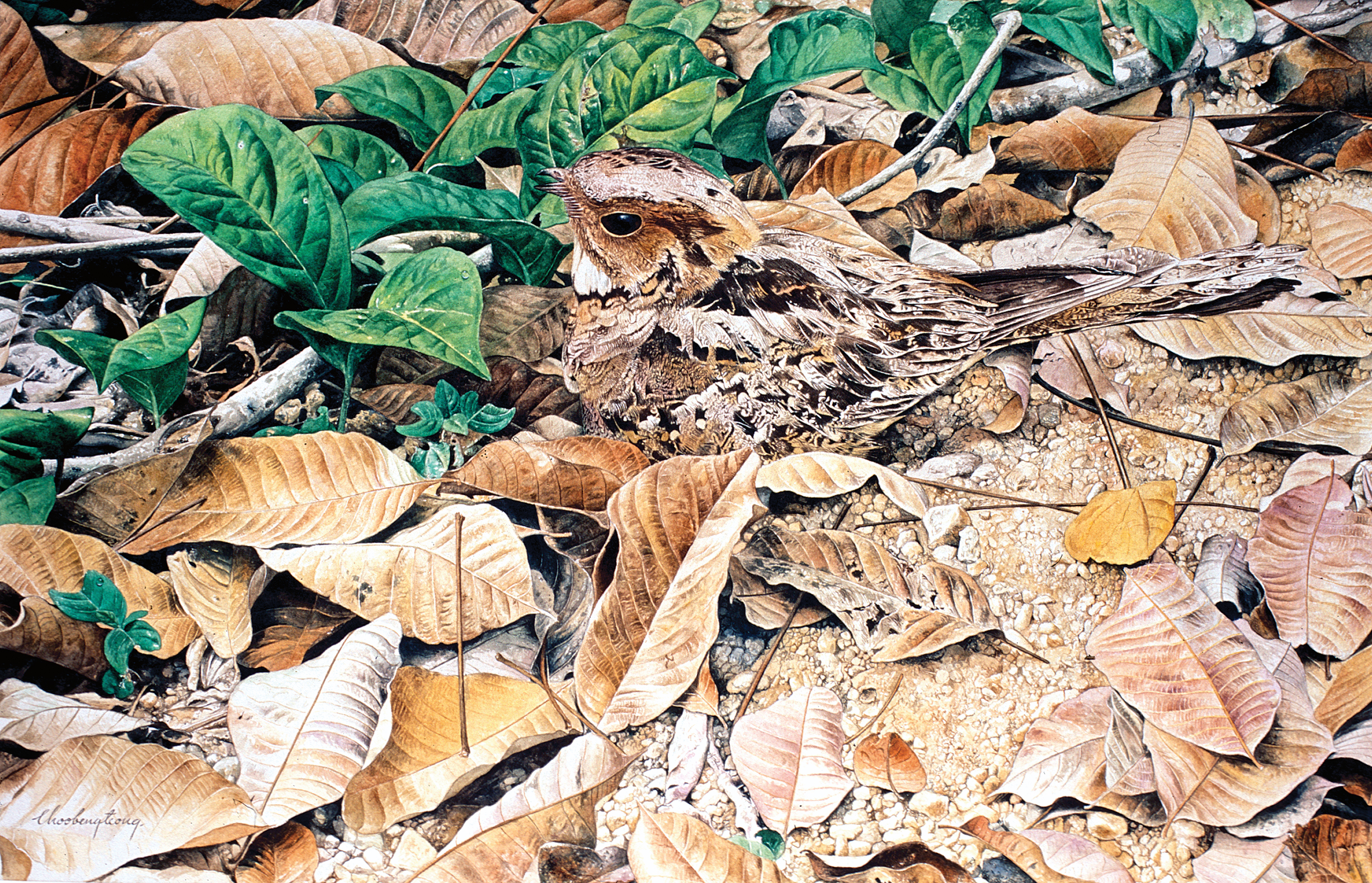
This common night bird can be found in most parts of Malaysia but is often heard and not seen.
“The nightjar is quite peculiar. Even if you go close to the bird, they think you can’t see them,” Choo said. “Most of the time, you don’t see the bird. You’ll only notice it when you’re too close and they’re flying away.”
Choo has been a member of the Malaysian Nature Society since 2006. As an advocate for animals and conservation, he firmly maintains that an appreciation for wildlife and nature is crucial for a healthy nation.
Choo said he believes fostering a deeper appreciation of wildlife among humans can have a direct impact on the wellbeing of birds. His method of conservation is telling their stories with his paint brushes and canvases, which could also benefit the people living alongside them.
“The problem is that our knowledge of nature, of wildlife in Malaysia, is hanging stagnant all the time,” Choo said. “We have to do better in creating awareness for our wonderful nature.”
As the natural habitat of 844 species of birds and 17 endemic species, Malaysia is considered one of the most biodiverse countries in the world. But the abundance of nature and wildlife often goes unnoticed in the nation’s cityscapes.
“Generally, the people who come and see my work are people who already have an interest in birds,” Choo said. “As for the regular folks in the city, they have no idea that we have these birds.”
Ever since his first solo exhibition in 1987 at an art gallery in Penang, Choo’s work has been exhibited internationally in Sweden, Hong Kong and Korea. His art was auctioned at Christie’s South Kensington Wildlife Art Auction in London in 1997 and 1998.
Now at the age of 55, Choo worries there won’t be a younger generation of Malaysian wildlife artists to whom he can pass the torch: “I don’t see any upcoming wildlife artists. I might be the last.”
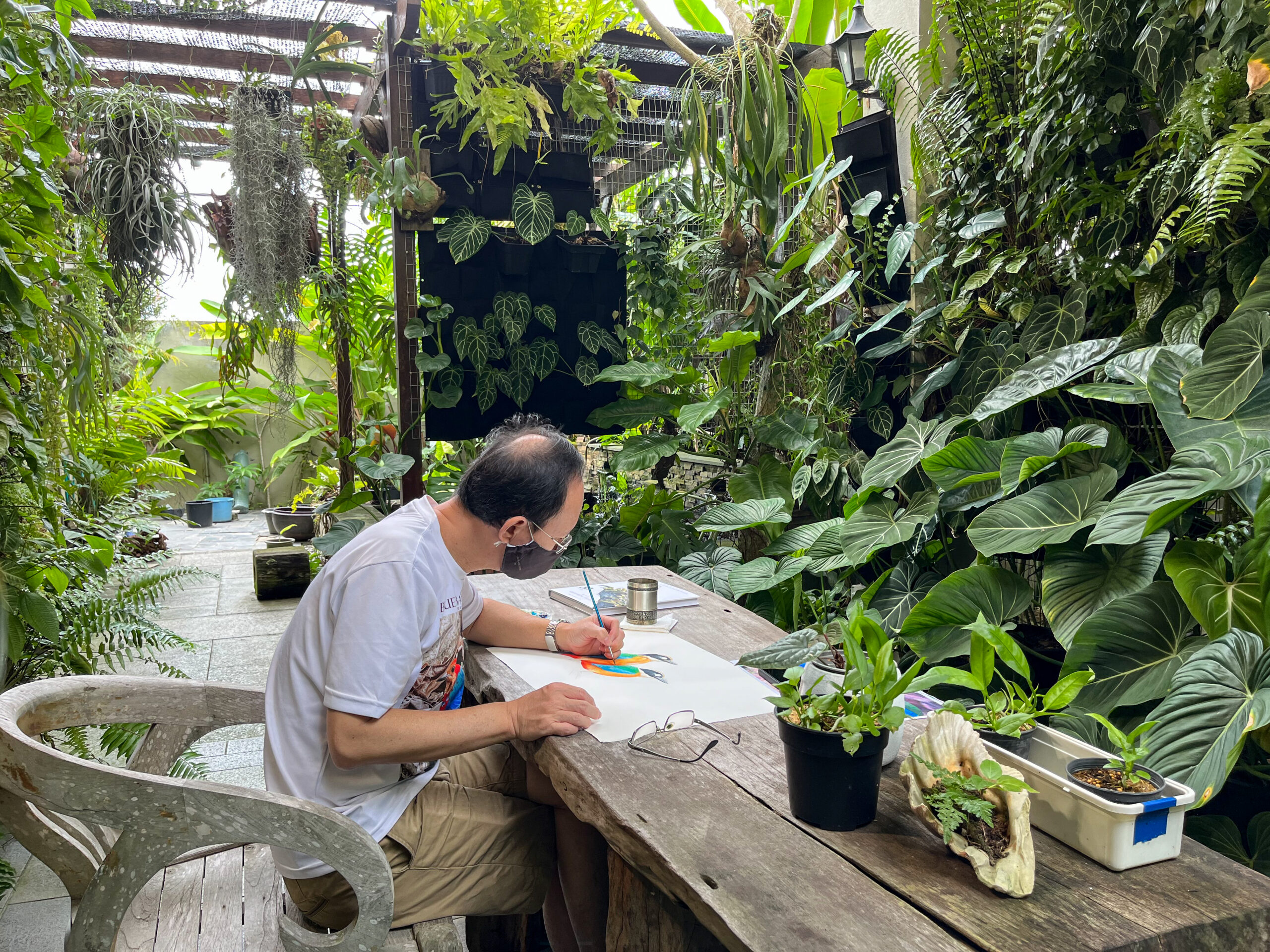
“Other [wildlife artists] that I know are quite old already,” he said, referring to renowned Malaysian artisans including Jaafar Taib and the late Ong Soo Keat, whose paintings were rendered on the nation’s postal stamps.
“When I was young, I was looking at [Ong Soo Keat’s] paintings. I followed [his footsteps], so I would say that I’m the only one doing what he’s doing,” Choo said. The two shared an exhibition at the George Town Festival in Penang in 2018.
“I just hope that more people will get into wildlife art,” he said, noting that when there are more wildlife artists, there will be more exhibitions and greater exposure helping spread global awareness of wildlife in Malaysia. “That is how you attract people to come see the paintings, and get them interested in Malaysian art.”
Choo noted the Malaysian education system’s lack of emphasis on the natural environment among the difficulties in raising awareness: “When the children learned about plants and animals, did they even show them [outside of the classroom]?”
For Choo, exposing children to Malaysia’s natural wildlife should begin at a young age and include classroom discussions.
“They don’t teach them about wildlife, they don’t take them to see animals,” he said. “So how are they going to appreciate nature?”
He hopes his book can help nurture the next generation of wildlife artists and bring more awareness about the beauty and conservation of the birds he depicts.
“I wish more people would appreciate wildlife art,” Choo said.
When Choo moved to Penang ten years ago, he frequently encountered sparrows. Now they show up noticeably less, he said, and he encounters the species less and less over time.
He recalls an excursion 20 years ago to a hill in Penang, when he could enjoy constant nest sightings of the black-headed bulbul, an olive-yellow bird with a distinctive black head and black tail stripe.
“Now their nests are much deeper in the jungle,” Choo said. “Maybe that’s the effect of human disturbances.”
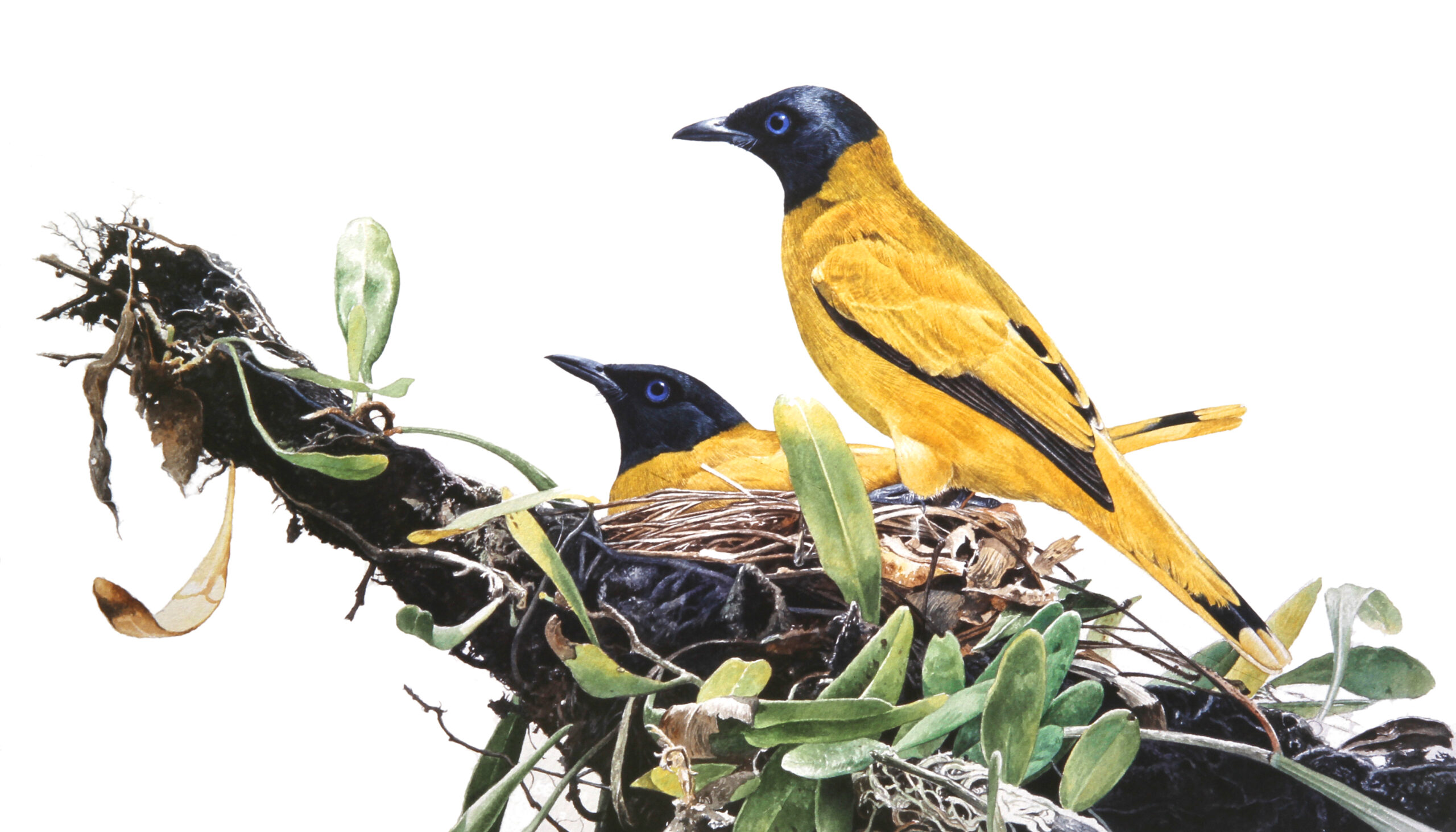
Many avid birders in Malaysia share Choo’s vision of greater avian awareness among members of the public.
Corina Puyang Jau, a birder and naturalist at The Habitat, a newly established UNESCO site in the Penang Hill area on Penang Island, said being in the forest and observing birds in their natural territory humbles her deeply.
“Just come into the forest,” Jau said. “And you see all of this beauty. We think so much about our own life but when we see birds doing their own thing, it’s refreshing,” she said, stopping to point out a greater racket-tailed drongo sitting on an exposed branch. The species is nearing dangerously low numbers.
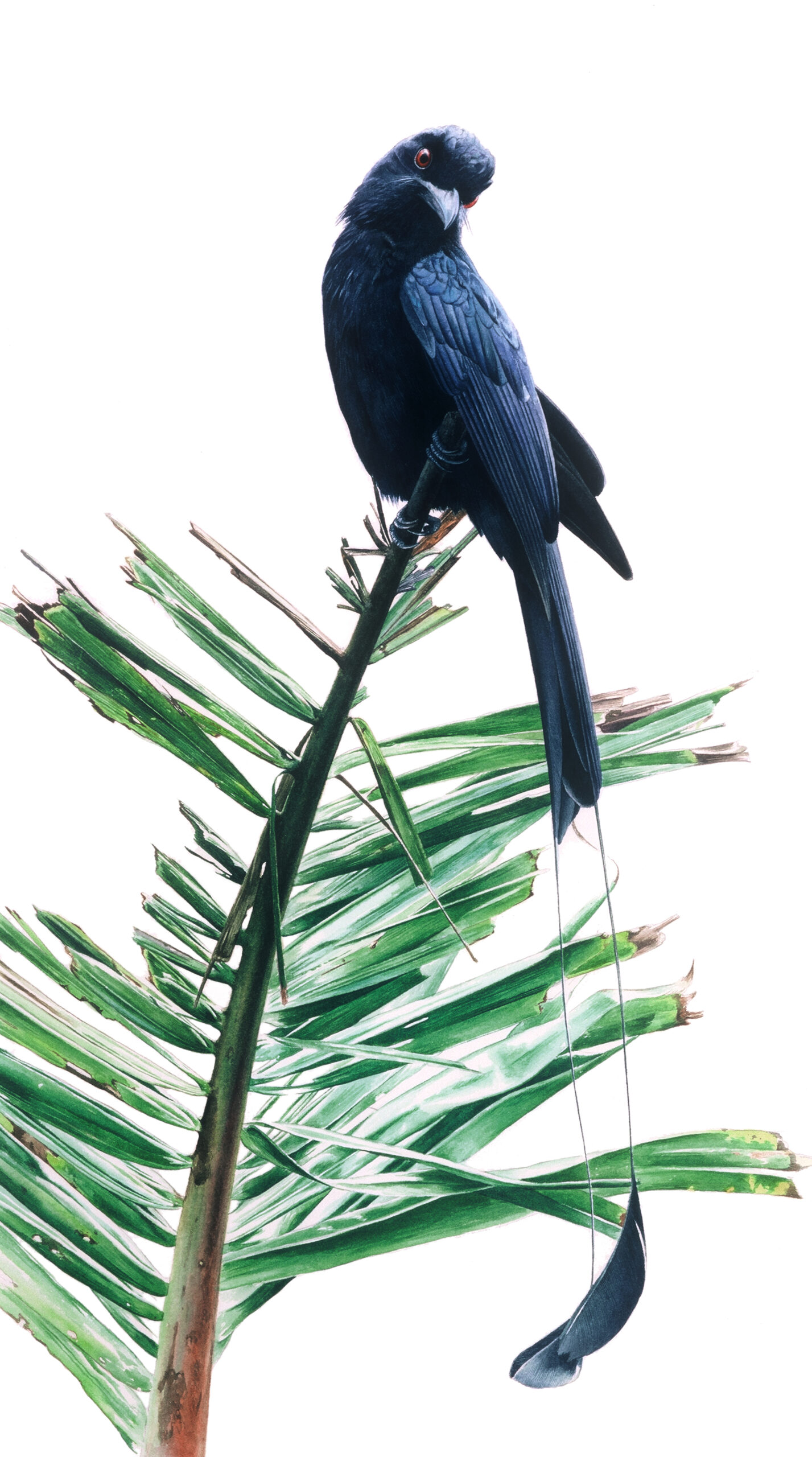
Birdwatching is never boring, Jau said, and her work at The Habitat centers on showing people what she considers the unrivaled beauty of birds.
“The light of the golden hour, the yellow glow in the forest. I hope people can see what I’m seeing, the same beauty as I am seeing,” Jau said, staring up at the green canopy of trees towering overhead, taking in the wistful singing of the birds after a light rain.
“Lucky for me, I work here so I can enjoy it,” she said. “But for people who aren’t working here, they can come here and realise that, ‘Wow, there is more to life than just working in the office.’”
For the people who cannot escape the metropolitan areas where nature is scarce, a quick trip to the wilderness is still accessible through Choo’s masterful paintings.
Conservationist Quek Yew Aun is a proud owner of Choo’s book and his painting of the extinct Sumatran rhinoceros, which Quek said is a reminder of “what may be if we do not save our species – just a painting on the wall.”
“Nature is art in motion. When you see something so beautiful as nature captured in art and have the ability to draw attention towards conservation, it must be supported,” Quek said.
“Perhaps through art, we can get people to also love nature.”


